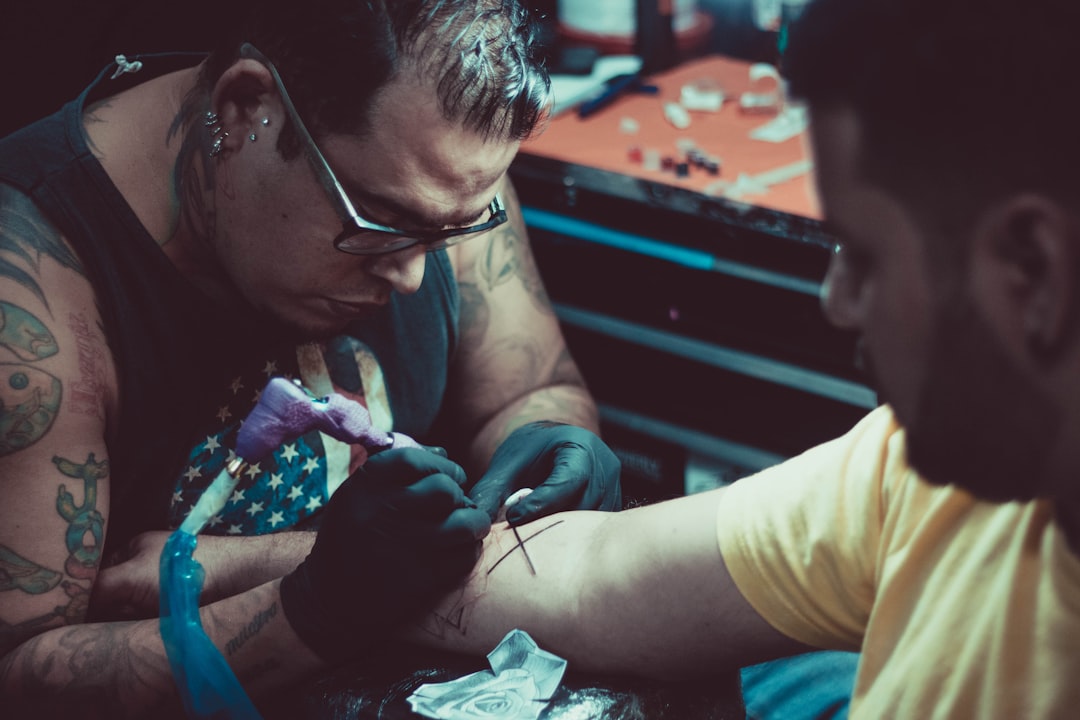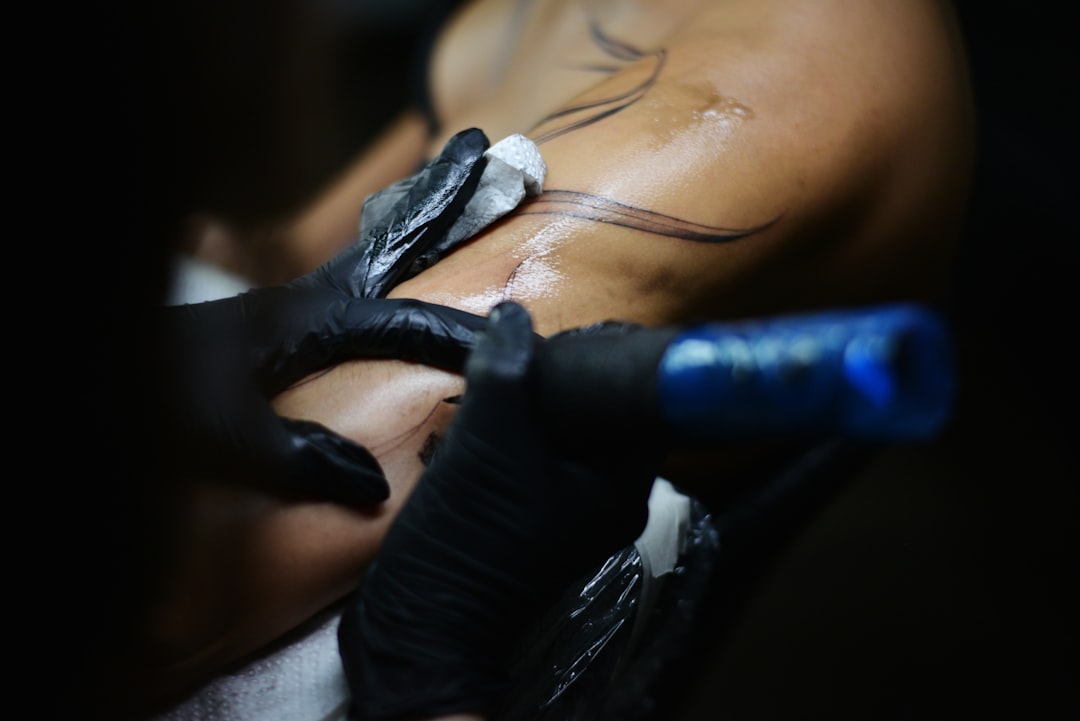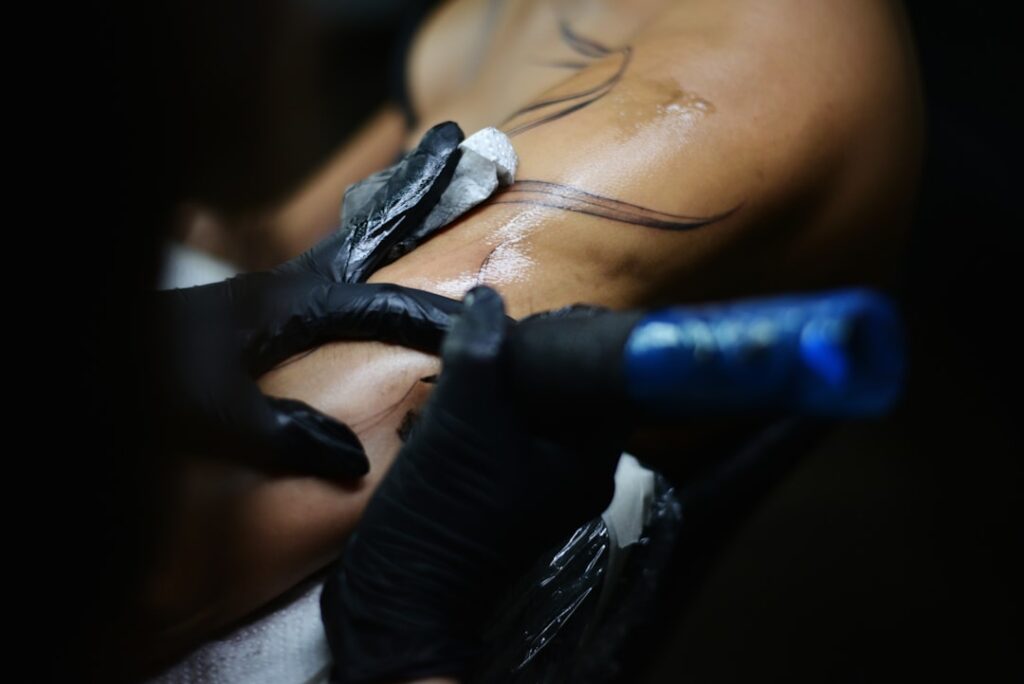Laser Tattoo Removal for Different Skin Types: What You Need to Know
Introduction
Tattoos can be a beautiful form of self-expression, but what happens when you want to erase that canvas? Enter laser tattoo removal—a popular way to say goodbye to unwanted ink. However, before you rush to the clinic, it’s vital to understand how different skin types respond to laser treatment. The journey to clear skin involves more than a zap; it requires a personalized approach to ensure safe and effective results. So, let’s dive into what you need to know about laser tattoo removal for various skin types!
Understanding Laser Tattoo Removal
Have you ever looked at an old tattoo and thought, “Maybe it’s time to say goodbye?” If so, you’re not alone! Laser tattoo removal is a popular method for those seeking to erase past ink. But how exactly does it work, and what should you consider if you have a specific skin type? Let’s dive in and break it down.
How Laser Tattoo Removal Works
Laser tattoo removal involves breaking down the ink particles in your skin using high-intensity light beams. When the laser light hits the tattoo, it shatters the ink into tiny pieces. Over time, your body’s immune system gradually clears away these ink particles, making the tattoo fade with each session.
The process is generally safer and less invasive than other tattoo removal methods. Importantly, multiple sessions are often needed to achieve complete removal, and the number of sessions can vary based on several factors. While the procedure can feel a bit like a rubber band snapping against your skin, advances in technology have made it more tolerable and effective with minimal downtime.
Factors Affecting Laser Tattoo Removal
Multiple factors can influence the success and duration of your laser tattoo removal journey. Here are some key ones to consider:
– Ink Color: Black ink is the easiest to remove because it absorbs all laser wavelengths, while colors like green, blue, and yellow can be more challenging.
– Tattoo Age: Older tattoos are often easier to remove than newer ones as the ink has already started to fade.
– Tattoo Location: The location on your body matters. Tattoos on areas with better blood circulation, like the face, may fade faster.
– Ink Depth and Density: The deeper and more densely packed the ink, the more sessions might be required.
– Skin Type and Tone: Your skin type and color significantly impact the laser tattoo removal process, as we’ll explore in the next section.
Skin Types and Tattoo Removal

Your skin type plays a crucial role in how laser tattoo removal works for you. Understanding your skin’s unique characteristics helps in tailoring an effective and safe removal process.
Fitzpatrick Skin Type Classification
Before diving into specifics, it’s helpful to know about the Fitzpatrick skin type classification. Developed by Dr. Thomas Fitzpatrick, this system classifies skin based on its response to sun exposure, which in turn affects its reaction to laser treatments. The classification includes:
1. Type I: Very fair skin, burns easily, rarely tans.
2. Type II: Fair skin, usually burns, tans minimally.
3. Type III: Medium skin, sometimes burns, gradually tans.
4. Type IV: Olive skin, rarely burns, tans easily.
5. Type V: Brown skin, very rarely burns, tans very easily.
6. Type VI: Dark brown to black skin, never burns, tans profusely.
Understanding your skin type can help guide your approach to laser tattoo removal, ensuring the process is both effective and gentle.
Challenges for Darker Skin Tones
Darker skin tones, categorized as Types IV to VI in the Fitzpatrick scale, can face unique challenges in laser tattoo removal. Here’s why:
– Higher Melanin Levels: Darker skin contains more melanin, which absorbs a significant portion of the laser energy. This can lead to risks such as hyperpigmentation or hypopigmentation following the removal process.
– Advanced Laser Technology Required: Specialized lasers, such as the Q-switched Nd:YAG laser, are often used as they penetrate deeper without as much risk of affecting surrounding tissue.
– Number of Sessions: Due to these complexities, removal may require more sessions to prevent skin damage while still effectively breaking down the ink.
Despite these challenges, successful removal is possible with the right techniques and technology, handled by skilled professionals.
Considerations for Lighter Skin Tones
For those with lighter skin tones, Types I to III, laser tattoo removal is typically a more straightforward process. Here are some pointers to consider:
– Lower Melanin Risk: With less melanin in their skin, individuals with lighter tones are generally less prone to pigmentation changes post-treatment.
– Easier to Treat a Range of Colors: While black remains the simplest color to remove, lighter skin may also respond better to treating colored tattoos, as there’s less risk of the laser affecting surrounding tissues.
– Fewer Sessions Often Required: Light skin usually requires fewer sessions due to the lower risk of skin damage and more effective ink targeting.
Whether your skin is fair or dark, the proper guidance and technology can ensure a safe, effective journey in erasing your ink smoothly. Always consult with a qualified professional who can tailor the treatment to your skin type and the nuances of your tattoo. With patience and perseverance, you’ll be well on your way to transforming your canvas!
Choosing the Right Laser for Your Skin Type
Laser tattoo removal is an incredible innovation, but not all lasers are created equal. The trick is choosing the right type of laser that matches your unique skin type, ensuring effective and safe tattoo removal. Let’s break down what you need to know about different lasers and how they fit with various skin types.
Types of Lasers Used in Tattoo Removal
Tattoo removal lasers work by emitting specific wavelengths of light that target the pigment in your ink without harming the surrounding skin. There are primarily three types of lasers used for tattoo removal:
– Q-Switched Nd:YAG Lasers: These are versatile and widely used, particularly effective for removing dark blue and black ink. They are often suitable for darker skin tones due to their gentle effect on melanin.
– Ruby Lasers: These lasers target lighter ink colors like green and blue. They’re less common because they can be harsh on darker skin types, often suited for lighter skin tones.
– Alexandrite Lasers: Known for their effectiveness on green ink, these lasers work best on lighter skin types. They tend to have a risk of pigment change for those with darker skin.
Matching Lasers to Skin Types
Skin types are typically categorized by the Fitzpatrick scale, which ranges from Type I (very fair) to Type VI (very dark). Here’s a quick guide on matching lasers with skin types:
– Type I to III (Fair to Medium-Fair Skin): Most laser options are available, giving flexibility to choose based on ink color.
– Type IV to VI (Olive to Dark Skin): Nd:YAG lasers are usually the top choice, known for their precision in targeting deeper pigmentation without causing significant skin damage. It’s crucial to use lasers that have longer wavelengths to minimize risks of hypopigmentation or hyperpigmentation.
Ensuring Safe Treatment
Safety is paramount when it comes to laser tattoo removal, regardless of your skin type. Here are some tips to ensure your sessions are as safe as possible:
– Consult a Specialist: Visit a practitioner who specializes in working with your skin type. Discuss any concerns you may have about pigmentation changes.
– Patch Test: Before a full session, a patch test can be performed to see how your skin reacts to the laser.
– Follow Pre- and Post-Procedure Instructions: Proper care before and after your treatment is essential to avoid complications.
Preparing for Your Laser Tattoo Removal Session

Getting ready for your laser tattoo removal session is the next crucial step. Preparation sets the stage for a smooth procedure and effective results. Here’s how you can get ready to say goodbye to your unwanted ink.
Finding a Qualified Practitioner
Choosing the right professional is just as important as picking the right laser. Here’s how to ensure you are in good hands:
– Certification Matters: Look for practitioners who are certified in laser treatments. They should have plenty of experience with tattoo removal and various skin types.
– Check Reviews and Testimonials: Online reviews and personal recommendations can provide insights into the practitioner’s expertise and professionalism.
– Consultation is Key: A thorough consultation should be the first step. A qualified practitioner will assess your tattoo, discuss your skin type, and decide on the best laser treatment for you.
Pre-Treatment Care
What you do before your session can significantly impact the results. Here are some pre-treatment care tips:
– Avoid Sun Exposure: Keep your tattoo out of the sun to prevent tanning or burning, which can affect treatment sensitivity.
– Refrain from Tattoos’ Products: Avoid using any new products on your tattooed area for at least a week before your session.
– Hydrate and Nourish: Drinking plenty of water and maintaining a healthy diet can help your skin heal faster.
– Skip Certain Medications: Inform your practitioner of all medications you’re taking. Some, like aspirin, can increase bruising and should be avoided.
Armed with this knowledge, you’re one step closer to a safe and successful laser tattoo removal experience. Remember that patience is key, as tattoo removal is usually a gradual process requiring multiple sessions. Keep your expectations realistic, and before you know it, you’ll be well on your way to seeing clearer skin.
Conclusion
Navigating the world of laser tattoo removal can seem daunting, but understanding how your skin type impacts the process can make it easier. Keep these key takeaways in mind:
– Consult with a certified specialist who understands your skin type.
– Discuss the expected number of sessions required and any potential risks.
– Follow all pre and post-treatment care instructions closely for the best results.
With the right care, you can ensure safe and effective tattoo removal tailored to your unique skin needs. Remember, patience and communication with your specialist are crucial on this journey.







